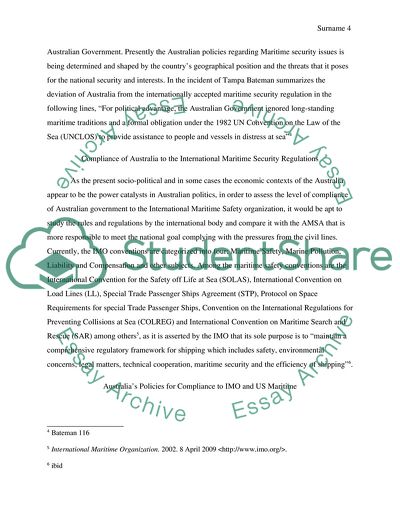Cite this document
(“Australias Compliance to IMO and US Maritime Security Regulations: The Essay”, n.d.)
Australias Compliance to IMO and US Maritime Security Regulations: The Essay. Retrieved from https://studentshare.org/miscellaneous/1553621-australias-compliance-to-imo-and-us-maritime-security-regulations-the-obstacles-on-the-way-of-compliance
Australias Compliance to IMO and US Maritime Security Regulations: The Essay. Retrieved from https://studentshare.org/miscellaneous/1553621-australias-compliance-to-imo-and-us-maritime-security-regulations-the-obstacles-on-the-way-of-compliance
(Australias Compliance to IMO and US Maritime Security Regulations: The Essay)
Australias Compliance to IMO and US Maritime Security Regulations: The Essay. https://studentshare.org/miscellaneous/1553621-australias-compliance-to-imo-and-us-maritime-security-regulations-the-obstacles-on-the-way-of-compliance.
Australias Compliance to IMO and US Maritime Security Regulations: The Essay. https://studentshare.org/miscellaneous/1553621-australias-compliance-to-imo-and-us-maritime-security-regulations-the-obstacles-on-the-way-of-compliance.
“Australias Compliance to IMO and US Maritime Security Regulations: The Essay”, n.d. https://studentshare.org/miscellaneous/1553621-australias-compliance-to-imo-and-us-maritime-security-regulations-the-obstacles-on-the-way-of-compliance.


